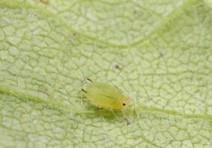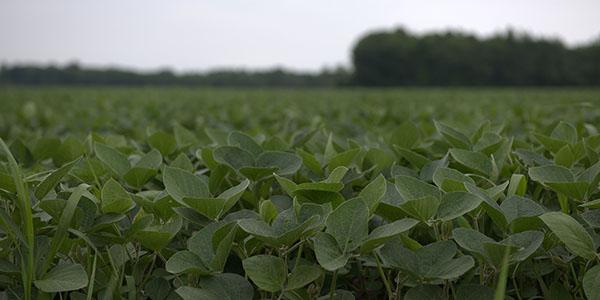AGRONOMICSUPPORT
YOU CAN TAKETO THE FIELD
When to Spray for Soybean Aphids
Soybean aphids will be an insect to watch out for in soybean fields over the coming weeks. This pest can cause significant economic impact if populations get high and fields are left untreated. So, let's take a look at what to scout for and how to prevent aphids in the future.
Scouting for Soybean Aphids
The critical time to scout for aphid populations is during the R1 through R5, which Nebraska is currently in, and a majority of the Corn Belt is likely there as well. Aphid eggs overwinter on buckthorn in wooded areas. Then, eggs hatch in the spring and aphid populations migrate to soybean fields.
 There are both wingless and winged aphids, and the included image shows how to identify wingless aphids. Like all aphid species, soybean aphids have piercing, sucking mouth parts. They cause damage to soybean plants by sucking sap from them. When populations get very high, they essentially suck the life out of soybean plants. As heavy populations continue to feed on soybeans, they excrete what is sometimes referred to as a sticky, honeydew substance on plants which can later turn into a dark sooty mold that further damages soybean yield.
There are both wingless and winged aphids, and the included image shows how to identify wingless aphids. Like all aphid species, soybean aphids have piercing, sucking mouth parts. They cause damage to soybean plants by sucking sap from them. When populations get very high, they essentially suck the life out of soybean plants. As heavy populations continue to feed on soybeans, they excrete what is sometimes referred to as a sticky, honeydew substance on plants which can later turn into a dark sooty mold that further damages soybean yield.
Soybean aphids prefer the newest foliage on soybean plants, so the newest trifoliate leaves are the first place to look while scouting for the pest. As populations increase, the pest can be seen on all leaves towards the top of the plant. In extreme pressure, they can be seen up and down the stem as well as both old and new leaves. While scouting, check at least 20 – 30 plants per field. Count both winged and wingless aphids but do not count dead aphid castings.
When to Spray for Soybean Aphids
Foliar insecticides can be used to manage aphid populations if they reach threshold levels. Insecticide treatment is necessary if all three of the following criteria are met:
- Average counts are greater than 250 aphids per plant.
- Populations are increasing.
- More than 80% of plants are infested.
Labeled rates of approved insecticides should be used along with adequate pressure to provide good coverage. It is important to not treat at lower than threshold levels to prevent from killing beneficial insects such as lady beetles that feed on soybean aphids.
Resources and More Information:
University of Minnesota Extension
UNL Cropwatch






Agronomist